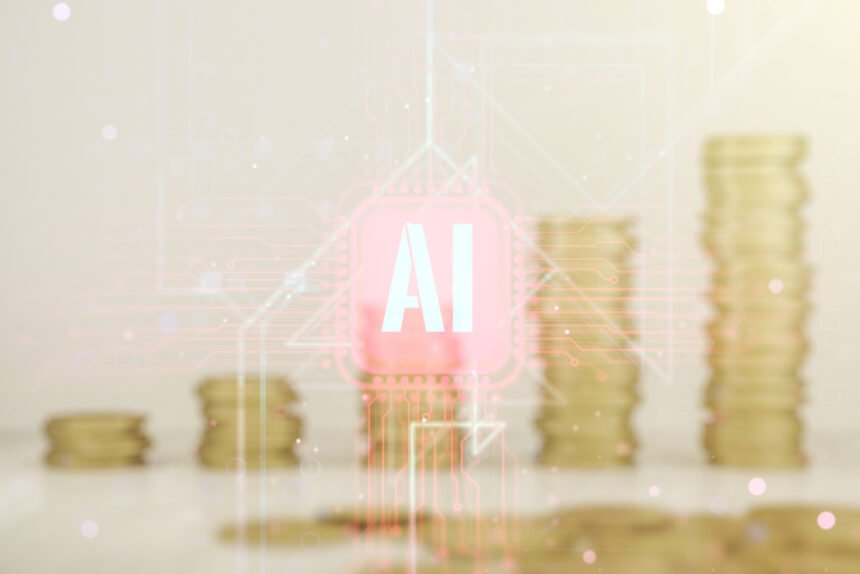Cryptocurrencies have become very important in the modern economy. They have also created numerous opportunities for informed investors to create diversified portfolios and take advantage of a market for assets that provide an exceptional ROI.
Machine learning technology has made cryptocurrency investing opportunities more lucrative than ever. The impact of machine learning on the market for bitcoin and other cryptocurrencies is multifaceted. A number of new predictive analytics algorithms are making it easier to forecast price movements in the cryptocurrency market. Investors that take advantage of this technology play a role in accelerating those price patterns.
As more investors realize that a cryptocurrency price is on an upward trajectory, they will allocate more of their portfolio to taking long positions with it. This means that the price will increase even faster. Conversely, if predictive analytics models suggest that the value of a cryptocurrency price is likely to decrease, more investors are likely to sell off their cryptocurrency holdings. In this circumstance, the price will continue to decrease at a faster pace, which creates more cryptocurrency trading opportunities.
Importance of machine learning in forecasting cryptocurrency prices
There are many reasons big data has affected cryptocurrencies. A lot of people have looked at the security benefits that AI offers to bitcoin and other cryptocurrencies. However, it is arguably even more useful for monitoring directions in prices.
In the early days of cryptocurrency trading, investors had a proclivity for relying on traditional fundamental analysis for asset valuation. They tended to avoid using technical analysis models, because those models don’t tend to hold up well with traditional securities, such as stocks and bonds.
However, trend forecasting appears to be much more effective at gauging the direction of cryptocurrency prices. A 2018 whitepaper from a team of researchers from the University of Copenhagen in Denmark showed that artificial intelligence modeling was more effective at forecasting trends in market prices than conventional benchmarks. A lot of follow up studies have reached similar conclusions.
The Danish study was one of the most comprehensive of its time. The researchers analyzed daily market data from nearly 1,700 cryptocurrencies that were sold between November 2015 and April 2018. Interestingly, nearly 200 hedge funds began specializing in cryptocurrency trading in the 12 months before that white paper was published.
What is the process for developing predictive analytics models to forecast cryptocurrency prices?
There are a lot of different variables that need to be taken into consideration when forecasting the direction of cryptocurrency prices. This means that analysts need to utilize a thorough and effective approach.
Towards Data Science highlighted a four-step process for developing a machine learning system to forecast cryptocurrency prices. The steps are covered below:
- You need to collect cryptocurrency data in real-time.
- You need to carefully organize the data so that it can be tested and trained.
- You need to start using an LSTM neural network to begin predicting price patterns of the cryptocurrency.
- You can begin evaluating the results and possibly present them in a visual format.
There are a number of data sources that investors can utilize. One option is to collect data from a website like CryptoCompare. These websites are treasure troves of cryptocurrencies data, which can be very useful for creating short-term trend forecasts.
However, you need to make sure that you use the right data to train your model properly. There are five important sets of data that need to be incorporated into your model. They are:
- The closing price of the cryptocurrency for any given day.
- The highest cryptocurrency price for the respective day.
- The lowest cryptocurrency price for the day in question.
- The opening price for that particular day.
- The trading volume for that cryptocurrency on that particular day.
You need to aggregate all of this data and ensure there is enough to make meaningful analysis. You should also track the accuracy of your algorithms and tweak them as necessary for optimal efficacy.
How do these machine learning algorithms further change the direction of cryptocurrency prices?
As stated earlier, these models are likely to have a significant impact on the direction of cryptocurrency prices. However, there are also some important caveats.
These models will only have a profound impact on the direction of cryptocurrency prices if they are widely used, especially among high-volume traders. If only a small number of traders are making cryptocurrency purchase and sell orders based on analysis from predictive analytics models, then they might barely move the needle on price directions. However, new indicators suggest that a large number of cryptocurrency investors are likely to use them, which will have a profound impact on the direction of the market.
The accuracy of these machine learning algorithms is also important. If they accurately project the direction of the market, then they can help accelerate private patterns. However, if they are not accurately trained, then they can act as a dampening factor instead. The University of Copenhagen study shows that they project price movements better than regular benchmarks. Therefore, it is likely that it will drive the momentum of these programs. However, people utilizing less reliable models could hinder momentum of those prices instead.







